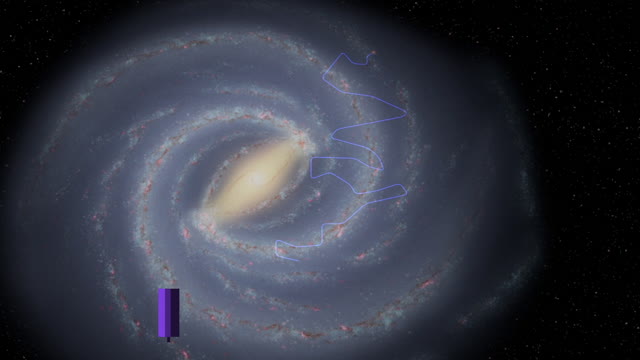Premium Only Content

Did you see this?
A study using 12 years of data from NASA’s Fermi Gamma-ray Space Telescope confirms that one supernova remnant is producing some of the highest-energy protons in our galaxy.
Theorists say the highest-energy cosmic ray protons in the Milky Way reach a million billion electron volts, or petaelectronvolt (PeV) energies. But the precise nature of their sources, which astronomers call PeVatrons, has been difficult to pin down.
Fermi has shown that the shock waves of exploded stars boost particles to speeds comparable to that of light. Called cosmic rays, these particles mostly take the form of protons, but can include atomic nuclei and electrons. Because they all carry an electric charge, their paths become scrambled as they whisk through our galaxy’s magnetic field, which masks their origins. But when these particles collide with interstellar gas near the supernova remnant, they produce a tell-tale glow in gamma rays — the highest-energy light there is.
Out of about 300 known supernova remnants, only a few have been found to emit gamma rays at energies high enough to potentially be PeVatrons. One is G106.3+2.7, a comet-shaped cloud located about 2,600 light-years away in the constellation Cepheus. A bright pulsar caps the northern end of the supernova remnant, and astronomers think both objects formed in the same explosion.
Fermi and ground-based gamma-ray observatories have detected billion- (GeV) and trillion-electron-volt (TeV) gamma rays in the tail of the remnant, away from the pulsar. By combining 12 years of Fermi observations, astronomers were able to confirm that the highest-energy gamma rays coming from the remnant must be the result of protons boosted to PeV energies — meaning that G106.3+2.7 is a PeVatron.
-
 3:16:38
3:16:38
Price of Reason
11 hours agoTrump FIRES Fed Governor Lisa Cook! Cracker Barrel CRISIS Continues! James Gunn DCU Woes! Gamescon!
106K7 -
 2:25:01
2:25:01
FreshandFit
6 hours agoTyreek Hill Pays Ex Wife $1 Million in Ongoing Fees From Divorce?!
30.5K3 -
 2:03:46
2:03:46
Inverted World Live
8 hours agoHaunted Dolls Hack Amazon Alexa | Ep. 98
104K2 -
 3:09:53
3:09:53
Laura Loomer
8 hours agoEP140: Loomer EXPOSES Islamification At US State Department
33.6K12 -
 3:05:00
3:05:00
TimcastIRL
8 hours agoTrump Floats Accepting 600,000 Chinese Student Visas, MAGA Uproar | Timcast IRL
209K148 -
 8:44:47
8:44:47
SpartakusLIVE
13 hours ago$20,000 Hide and Seek Tourney w/ Stonemountain64 || #1 Rat wins the BIG CHEESE
69.9K -
 2:34:02
2:34:02
Barry Cunningham
9 hours agoLISA COOK | ADAM SCHIFF | LETITIA JAMES | ARE THEY BEING SACRIFICED BY THE DEEP STATE?
102K59 -
 1:36:19
1:36:19
Flyover Conservatives
17 hours agoOnly 17% of Millennials Hit These 5 Adult Milestones—Why?; What If Childhood Trauma Is Behind Your Health Problems? - Dr. Troy Spurrill | FOC Show
40.4K4 -
 4:49:04
4:49:04
HogansAlleyHero
18 hours ago💥CHASING DOPAMINE💥✅TRUMP SAYS BATTLEFIELD IS THE BEST✅
51.8K3 -
 1:57:40
1:57:40
MattMorseTV
9 hours ago $13.69 earned🔴Trump just SHATTERED the PROJECTIONS.🔴
61.1K52